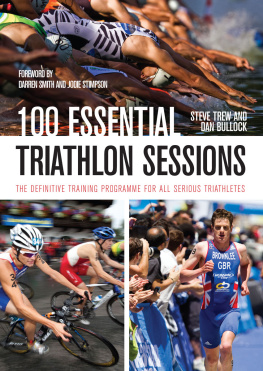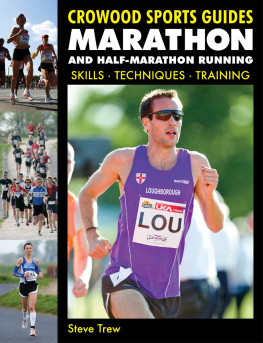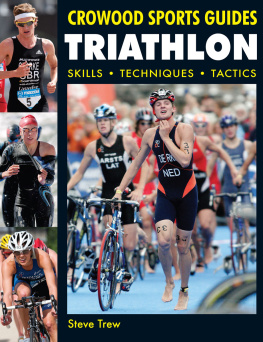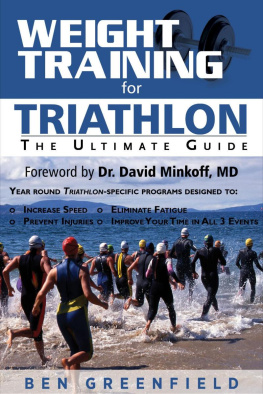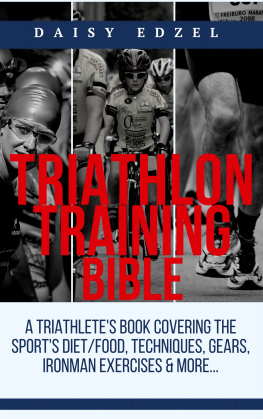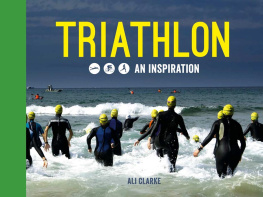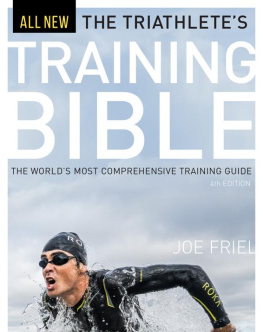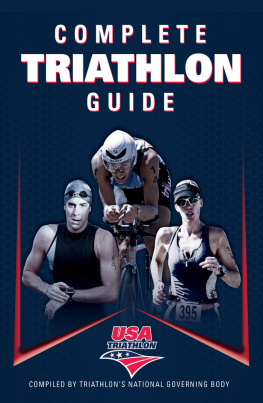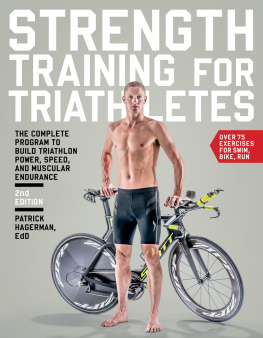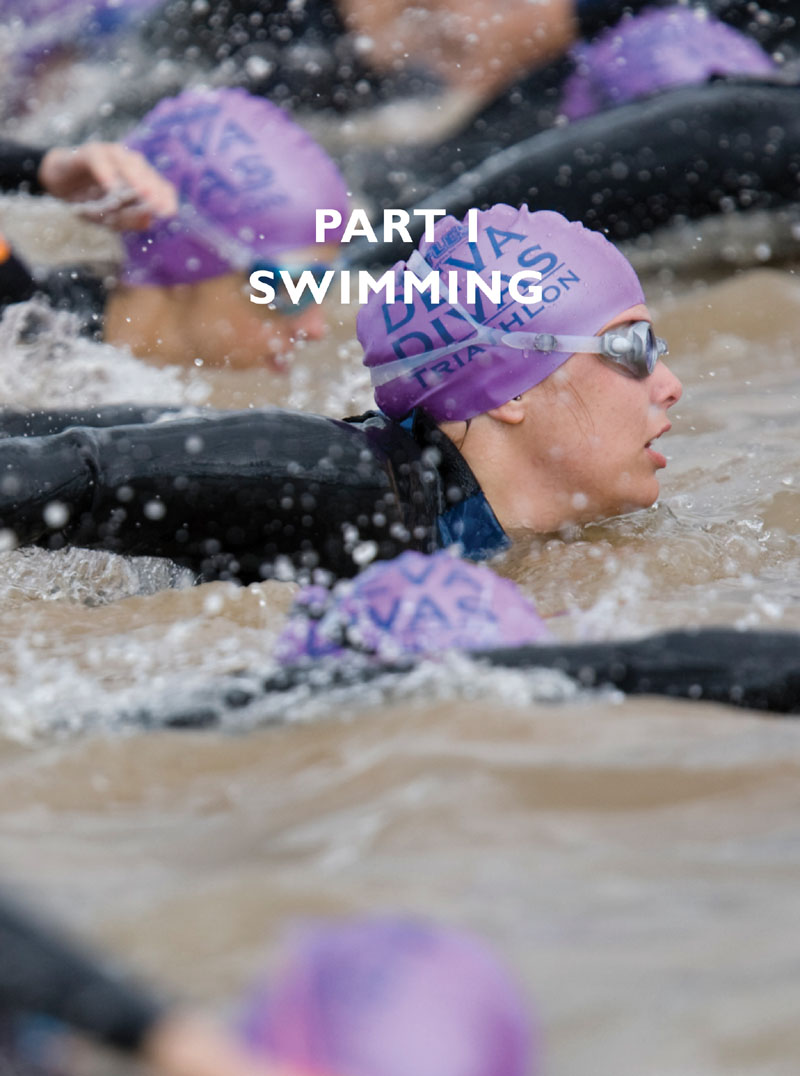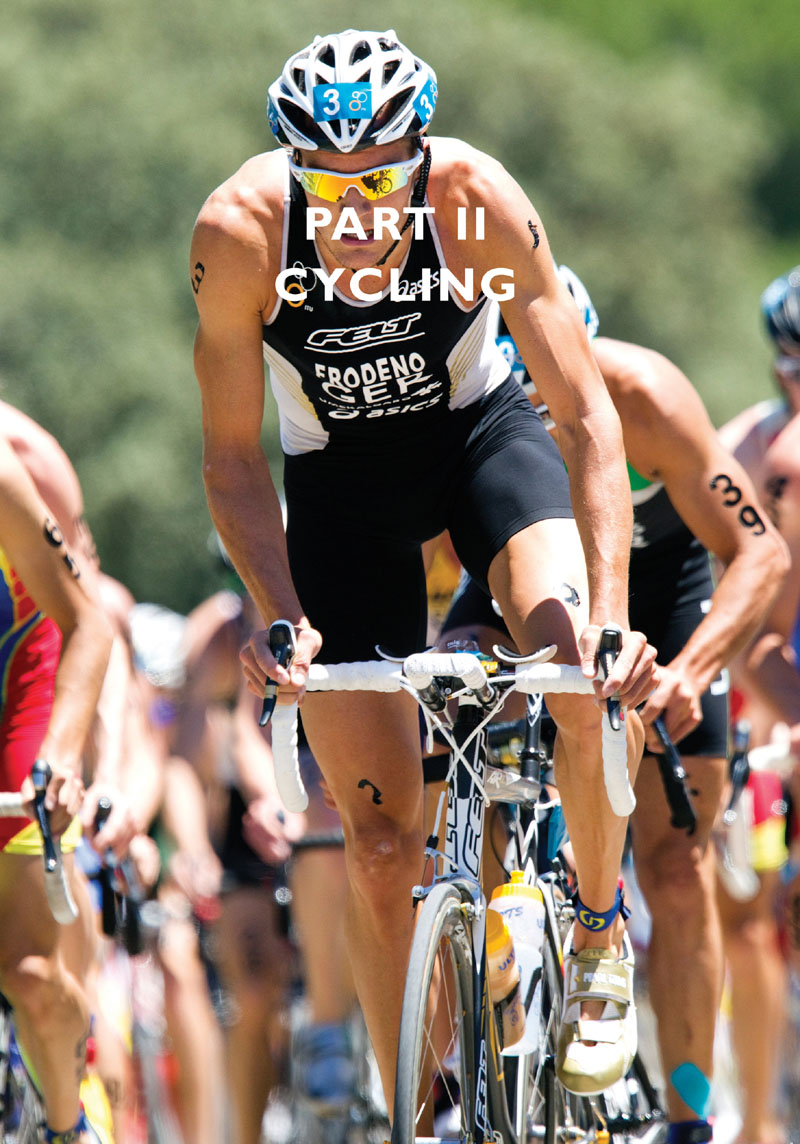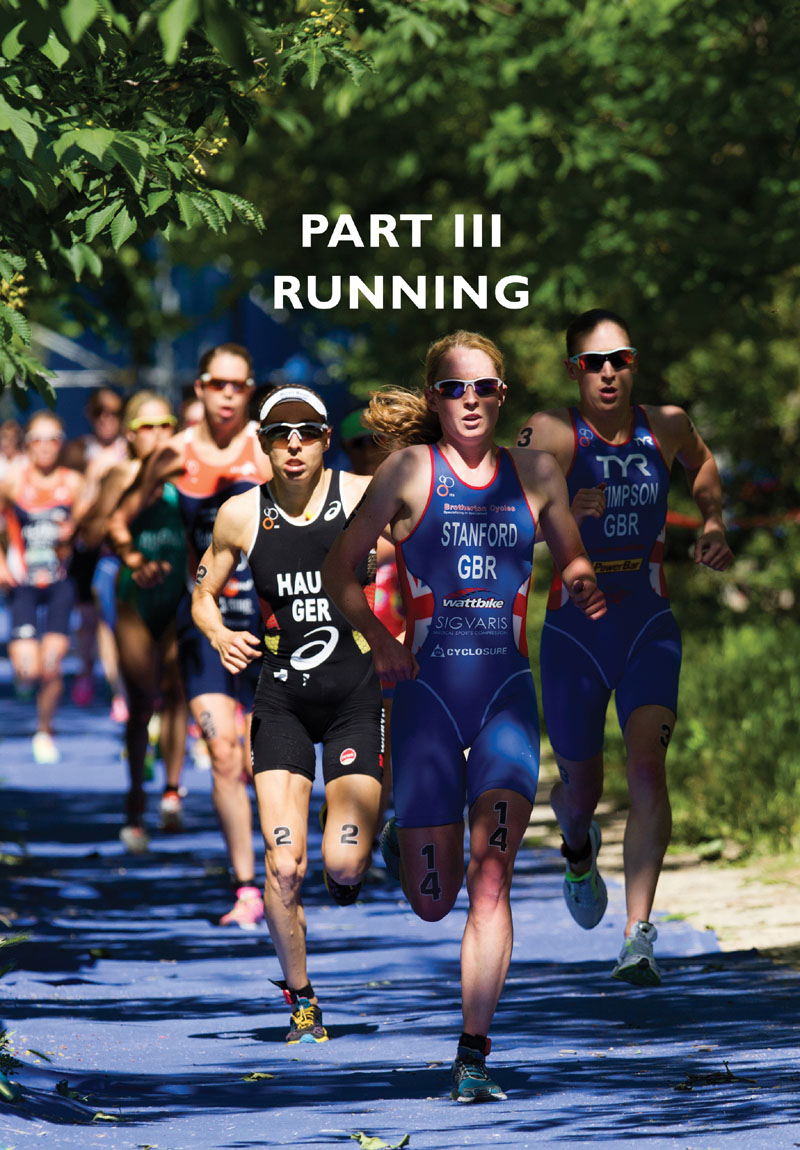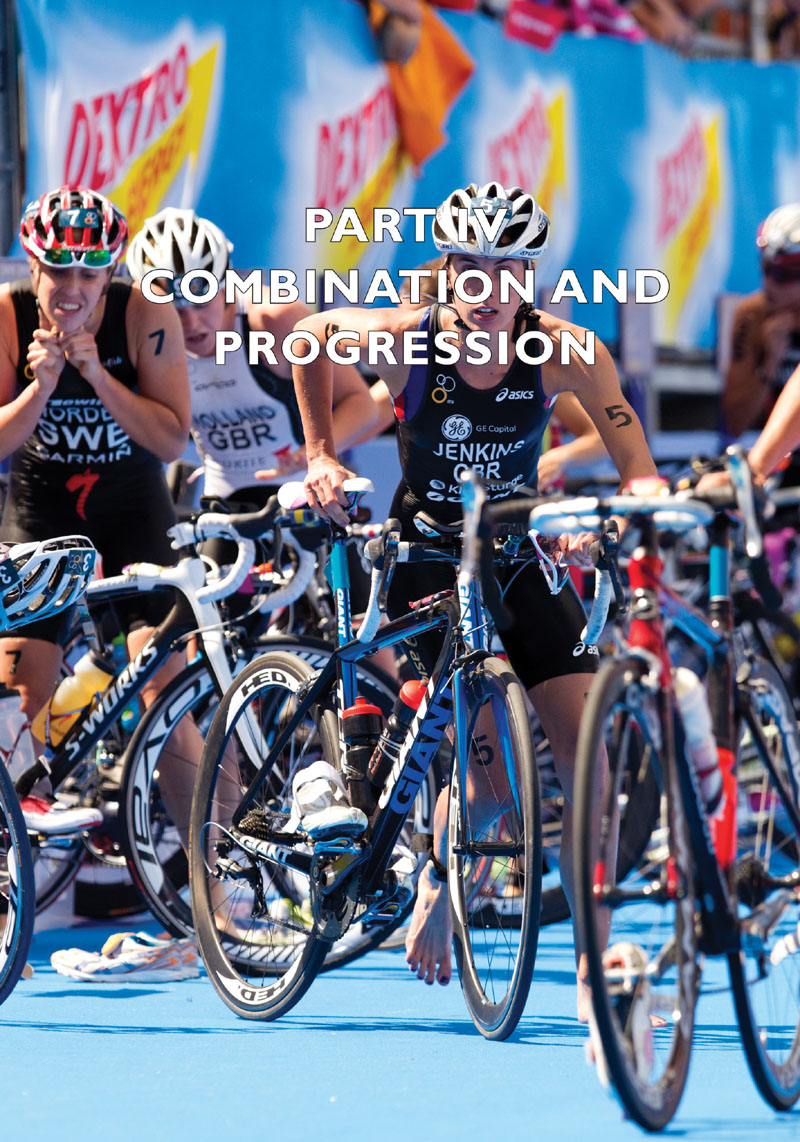FOREWORD
Few people inspire others for decades. Steve Trew inspired me when I was a young coach a good few years ago now, and continues to support the development of athletes and coaches alike to this day.
This book provides an insight into the accumulated knowledge of an educator at the top of his game, and will help you with the juggling of the different demands of sport and life. Bravo, Steve! I took notes when I read these training suggestions and they got me thinking deeply now as it did back then! Thanks once again, coach
Darren is regarded as the number one Olympic distance triathlon coach in the world. He coached six triathletes to the 2012 London Olympic Games; Sarah Groff of USA, Anne Haug of Germany, Lisa Norden of Sweden, Kate Roberts of South Africa, Barbara Riveros Diaz of Chile, and Vicky Holland of Great Britain.
Darren Smith
During my time in triathlon, Ive learned that every single training session must have meaning, purpose and aim. Its vitally important to never waste time and to make use of every single session. Whats the reason for this session? Why am I doing this? What do I get out of this? My coach always has an answer!
The sessions in this book are absolutely spot-on; theres a reason why you should be doing them, a time, and a scale so you can fit in with your level of fitness and aspirations. Great book, highly recommended!
Jodie finished runner-up in the World Triathlon Series in 2013.
Jodie Stimpson
I have been fortunate during my career to have worked with some amazing coaches as well as amazing athletes. In the coaching world, Dan Bullock is up there with the very best. His technical knowledge and analysis of stroke is superb. Dan has improved times and technique with swimmers and triathletes of all abilities from absolute beginner to World medallists. It has been a privilege to have worked alongside and learned so much from him.
Co-author Steve Trew
INTRODUCTION
Triathlon has been a huge part of my life for the last thirty years, and the changes I have seen in the sport during that time have been astounding, in particular the rapid increase in standard of performance at all levels and the massive changes in training. Back in the 1980s, triathlon was seen as a total endurance sport with little or no room for quality training.
The rate of improvement has been hugely impressive, and in long-distance triathlon, the rate of performance improvement has been even more remarkable, from that first Ironman in 1978, won by Gordon Haller in 11hr 46min 58sec, to the current times of sub 8hr for men and the astonishing 8hr 18min for Chrissie Wellington (GB) in the womens event. This time decrease of over 33 per cent cannot be matched by any other sport.
Of course, any new sport will see tremendous changes as it reaches out to more and more competitors, and this has been reflected in training for triathlon. There have been different phases of training as new (actually often old reinvented) methods have come into vogue. There has, at various times, been a different emphasis on a particular discipline. But its triathlon, isnt it? So every discipline is important. What is equally important is how the training for those three disciplines fits together, and how they relate and impinge upon each other.
At one time every single training session had to be a back to back, or brick. It works for some athletes; for others it is just extremely tiring. And thats whats important: each athlete needs to ask: What training do I need? What works for me? What is going to make me a better athlete? The bottom line for us is to find the sessions that make us improve.
We hope this book will help. It contains 100 sessions that Dan and I have used over the years and which have been effective in improving performance. There are no short cuts, but knowing what works and what doesnt, and choosing the crucial sessions to make those gains, is going to save time and avoid a lot of frustration.
An essential skill for all competitive triathletes at whatever level is juggling time, sessions and real life! Without that skill, life becomes rushed and less enjoyable.
Steve Trew
100 ESSENTIAL TRIATHLON SESSIONS
THE DEFINITIVE TRAINING PROGRAMME FOR ALL SERIOUS TRIATHLETES
STEVE TREW AND DAN BULLOCK
FOREWORD BY
DARREN SMITH AND JODIE STIMPSON

THE CROWOOD PRESS
First published in 2014 by
The Crowood Press Ltd
Ramsbury, Marlborough
Wiltshire SN8 2HR
www.crowood.com
This e-book first published in 2014
Steve Trew and Dan Bullock 2014
All rights reserved. No part of this publication may be reproduced or transmitted in any form or by any means, electronic or mechanical, including photocopy, recording, or any information storage and retrieval system, without permission in writing from the publishers.
British Library Cataloguing-in-Publication Data
A catalogue record for this book is available from the British Library.
ISBN 978 1 84797 673 4
CONTENTS
CHAPTER 1
SWIMMING TECHNIQUE
Effective swimming is one of the most biomechanically difficult sports to measure in terms of recognizing and calculating what is happening when it is done well. lite swimmers can hit the same number of strokes for length after length, but there will be subtle variations in terms of the pathway that each arm revolution takes. The more stable the foundation that these movements are based on, the greater the likelihood of more similar movements being repeated.
When attending training camps with swimmers and triathletes, it is hard not to see some key patterns develop. Issues with stroke stability and key inaccuracies are always apparent time and time again as we work with adults to improve their front crawl technique. It is always rewarding to see some significant breakthroughs in terms of getting faster from performing just a few key drills. I have relied on these basics for many years now, and while they are quite simple in their appearance, the essentials of technique are there. I was pleased but not surprised when I also finally found footage of some Olympians doing these same drills in their recovery swims at a top US university.
You will see that the basic extension position and torpedo drills are referred to continually throughout the fitness sessions, such is their importance. It is not a matter of drills being performed for learning and then forgotten: drills are repeated over and over again, just as a golfer will have their swing looked at from time to time and sometimes rebuilt.

